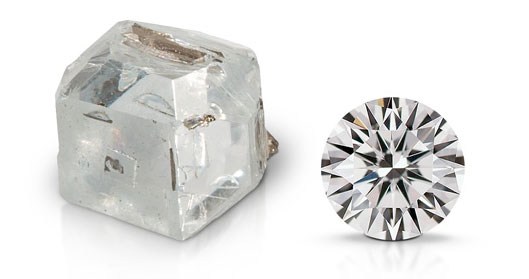What Are Lab Diamonds?

Lab Grown Diamonds, also known as engineered or cultured diamonds, are grown in highly controlled laboratory environments. They are made using advanced technological processes that duplicate the conditions under which diamonds naturally develop when they form in the mantle, beneath the Earth’s crust. Created diamonds are chemically, physically & optically exactly the same as mined diamonds and are real diamonds. The only difference is the point of origin. Lab Grown Diamonds are eco-friendly, conflict-free, and sustainable.
Lab Grown Diamonds are significantly more affordable than mined diamonds, offering great value.
The Process & How They’re Made
Lab Grown Diamonds are generally produced by two main methods, considered to be the very best in the industry: The first is called High Pressure-High Temperature (HPHT) and the second is called Chemical Vapor Deposition (CVD). Each process is best suited for certain sizes, shapes, and colors of diamonds.
HPHT diamond growth occurs within enormous pressure cookers called cubic presses, which can exert in excess of 70 metric tons. To grow a diamond in a cubic press, small diamond seeds are carefully placed into the bottom of a growth cell. A layer of additional carbon, in the form of graphite, is then delicately placed on top of the diamond seeds. The growth cell is then placed into the center of the cubic press and heated to 1,500 degrees Celsius while being subjected to 1 million psi of pressure, which is approximately 70,000 times the pressure at sea level.
CVD diamond production is quite different from HPHT growth in two major ways. First, the diamonds are grown in a vacuum instead of under tremendous pressure. Secondly, CVD growth requires large, flat plates of diamond instead of small seeds.
To grow a CVD diamond, diamond plates are placed into a vacuum chamber, carefully injected a hydrocarbon gas such as methane, and use high power microwave energy to break down the atomic bonds of the hydrocarbon gas. This separates the carbon atoms from the hydrogen atoms, and the resulting free carbon ‘rains’ down on the diamond plates, vertically growing the diamond atom by atom, similar to the way snow collects on a table.